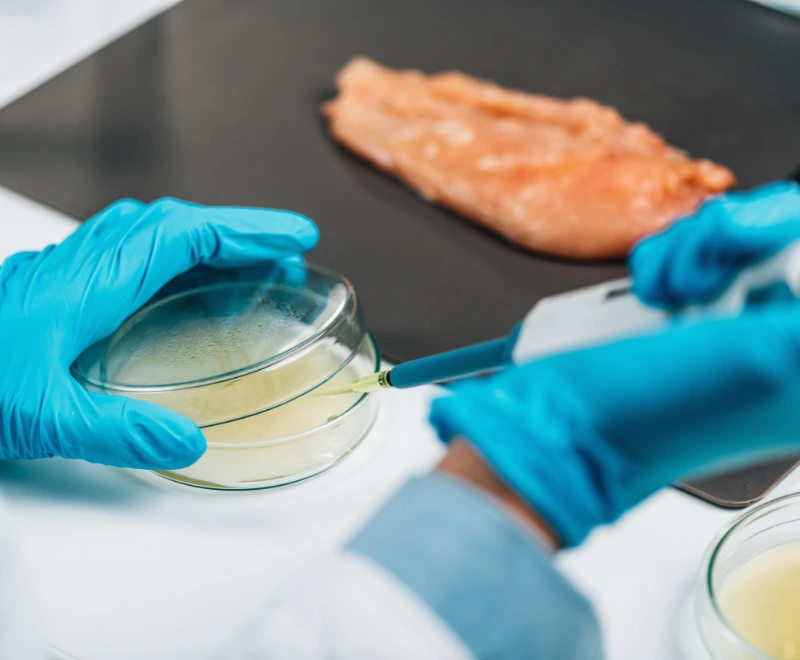Recombinant protein expression is one of the most essential technologies in modern biotechnology. It enables the controlled production of specific proteins by introducing an exogenous gene into a host system.
These proteins play a critical role in biomedical research, vaccine development, industrial enzyme production, and advanced therapies.
However, achieving efficient, soluble, and functional expression of the protein of interest (POI) involves a series of technical challenges. Protein structural variability, host cellular conditions, and expression system components can all hinder process performance.

Key Factors Affecting Recombinant Protein Expression
Expressing a recombinant protein is far from a one-size-fits-all procedure. Success depends on carefully planned genetic design, host system selection, and the control of experimental parameters.
The main challenges include:
- Low or undetectable expression levels of the recombinant gene
- Formation of inclusion bodies in E. coli
- Production of insoluble or inactive proteins
- Proteolytic degradation by host proteases
- Cellular stress or toxicity due to protein overexpression
- Absence of post-translational modifications (PTMs) in prokaryotic systems
Host and Vector Selection: A Critical Decision
Host system selection is a key factor in determining which proteins can be efficiently expressed. While E. coli remains the most widely used organism due to its speed and low cost, it has limitations in folding complex proteins or supporting post-translational modifications.
Eukaryotic systems such as yeast, insect, or mammalian cells provide greater flexibility for structurally demanding proteins.
The choice of expression vector is equally important. Key features like the promoter, codon optimization, purification tags, and regulatory elements directly influence transcription and translation efficiency.

Optimizing Culture and Expression Conditions
A frequently overlooked aspect is the physicochemical environment during expression. Parameters like temperature, induction time, inducer type, and oxygen availability can define the outcome.
To maximize soluble and properly folded protein yields, we recommend:
- Induction at temperatures between 15 °C and 25 °C
- Using low concentrations of inducers (e.g., IPTG)
- Supplementing with cofactors (metal ions, stabilizing additives)
- Employing stirred-tank bioreactors with precise control to ensure optimal and reproducible conditions
Table of Common Problems and Practical Solutions
| Observed Problem | Possible Causes | Recommended Strategy |
|---|---|---|
| Low expression | Rare codons, weak promoter | Codon optimization, promoter replacement, vector enhancement |
| Inclusion body formation | High temperature, improper folding | Lower expression temperature, co-expression of chaperones, solubility tags |
| Insolubility | Hydrophobic or disordered regions | Construct redesign, removal of non-essential domains |
| Proteolytic degradation | Host protease activity | Protease-deficient strains, addition of protease inhibitors |
| Toxicity | Protein’s biological activity | Use of tightly regulated promoters, reduction of basal expression |
Purification and Stabilization: A Critical Step Toward Functional Proteins
Purification is a key step in preserving the structural and functional integrity of recombinant proteins. Designing an effective protocol requires careful consideration of:
- Proper exposure of affinity tags (e.g., His-tag, GST)
- Use of specific buffers and mild detergents
- Protein stability under variations in pH, ionic strength, or temperature
For proteins containing transmembrane or hydrophobic domains, the choice of detergents and lipid-based additives is often decisive.
To maintain tightly controlled conditions and scale up the process efficiently, pilot-scale bioreactors are an ideal solution—particularly in applied research or industrial development settings.

Toward High-Throughput Platforms for Recombinant Protein Production
The growing need to produce multiple protein variants in parallel—whether for antibody screening, structural studies, or preclinical development—has driven the evolution of automated and scalable platforms. These systems enable:
- Parallel expression of protein libraries
- Automated adjustment of expression conditions
- Faster collection and analysis of experimental data
Such platforms are often integrated with precision bioreactors, quality control systems, and bioinformatics tools to accelerate the discovery and characterization of functional proteins.















